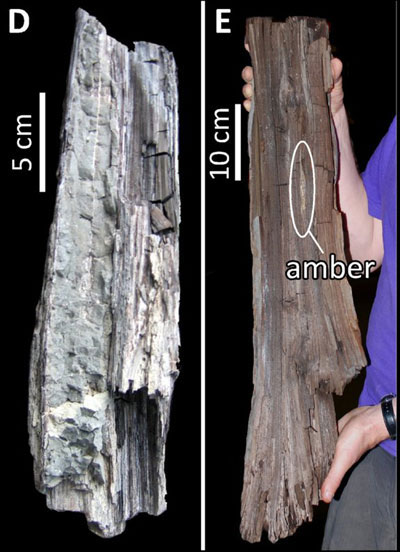Clues to climate in the early Eocene
The diamond hunt in the far north of Canada has yielded surprising results: a coniferous wood in a volcanic rock for over 50 million years.

Fossils found
This rare fossil has helped experts understand the climate in the early Ecocene period, lasting 56 to 34 million years ago. Accordingly this glacial region once had a swampy past.
Logs have been found inside kimberlite rock, a type of sometimes diamond-containing volcanic rock known as a 315-meter Panda circuit at Ekati diamond mine, in the southern part of the northern part of Lanh. Northern Territory of Canada.
According to a report published in the PLoS ONE journal, the Panda containment area at the beginning of the Eocene body was once covered by a hydroponic forest, like today's dark coniferous wood.
A kimberlite eruption that took place about 53.3 million years ago opened up a gap through the Earth's surface, "swallowing" some of these woods, according to University of Alberta research leader Alex Wolfe. .
Because fossils are perfectly preserved, it allows scientists to imagine a clearer picture of the climate in the early Eocene era.
- The discovery of insects sheds light on climate change
- Crocodile reveals the Earth's climate conditions millions of years ago
- The oldest nail in the world
- Factors causing early ripening grapes
- Mushrooms are 50 million years old in amber mass
- Has the earth ever been hot like now?
- Travel to the Arctic in ancient times 55 million years ago
- Indonesia developed a tornado early warning system
- Shocked because the sun rises early in the Arctic
- Find clues about water on other planets by ice molecules
- Mediterranean climate
- Climate change changes the face of Cat Ba biosphere area
 Discovered an ancient centipede fossil 99 million years old
Discovered an ancient centipede fossil 99 million years old Discovered bat-like dinosaurs in China
Discovered bat-like dinosaurs in China Discovered a 200-year-old bronze cannon of the coast
Discovered a 200-year-old bronze cannon of the coast Discover 305 million-year-old spider fossils
Discover 305 million-year-old spider fossils